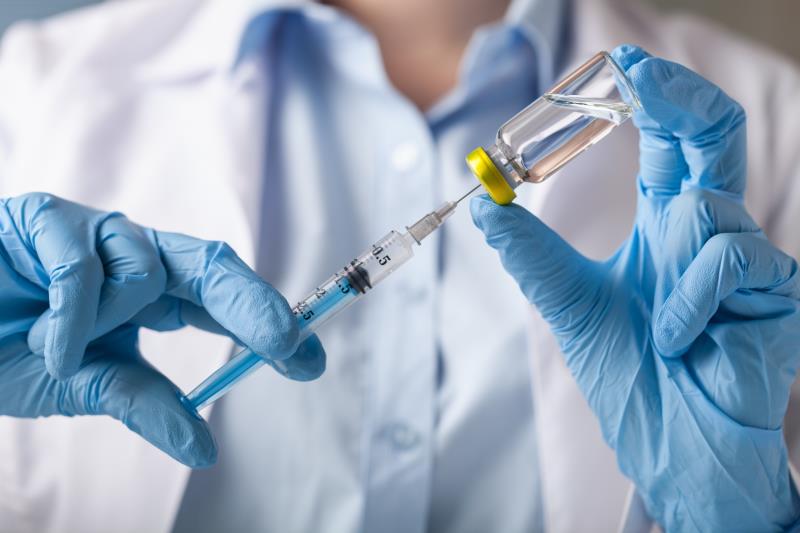Trivalent hep B vaccine yields robust immune response





A trivalent vaccine against hepatitis (hep B) is safe and effectively elicits robust immune response compared with a monovalent hep B vaccine, according to the PROTECT and CONSTANT studies presented during the 2020 digital ILC.
“Hepatitis B virus [HBV] infection remains a significant and rising global public health concern, one for which vaccination is a critical measure to prevent transmission,” said presenting author of the CONSTANT study, Dr Adam Finn from University of Bristol, UK.
The trivalent vaccine under investigation, Sci-B-Vac, contains three antigens: S, pre-S1, and pre-S2 antigens, which are expected to enhance immunogenicity in adults compared with the monovalent vaccine Engerix B containing only the S antigen.
In the multinational, double-blind PROTECT study, 1,607 adults in stable health aged ≥18 years (of which 80 percent were ≥45 years old) were randomized to receive either the trivalent vaccine at 10 μg dose or the monovalent vaccine at 20 μg dose, over three shots on days 0, 28, and 168. [DILC 2020, abstract FRI370]
The trivalent vaccine met the primary endpoint of being noninferior to the monovalent vaccine for seroprotection in the overall adult population (91.4 percent vs 76.5 percent).
“[While] hep B antibody [Ab] level >10 mIU/mL is accepted as a correlate of seroprotection, higher levels [≥100 mIU/mL] and/or higher hep B Ab geometric mean concentration [GMC] may indicate a more robust immune response and be associated with longer duration of protection,” explained lead author Dr Timo Vesikari from Vaccine Research Center in Tampere, Finland.
In keeping with the primary results on seroprotection, there were more participants in the trivalent vaccine arm who achieved hep B Ab level of ≥100 mIU/mL than the monovalent vaccine arm (80.8 percent vs 60.7 percent; difference, 20.1 percent, 95 percent CI, 15.5–24.6).
Furthermore, the trivalent vaccine also achieved the coprimary endpoint of superiority over the monovalent vaccine in adults ≥45 years (seroprotection rate, 89.4 percent vs 73.1 percent).
Specifically, the proportion of adults ≥45 years who had a robust immune response, as indicated by hep B Ab level of ≥100 mIU/mL, were 77.9 percent in the trivalent vaccine arm compared with 56.5 percent in the monovalent vaccine arm (difference, 21.45 percent, 95 percent CI, 16.2–26.6).
This higher immune response with the trivalent vaccine was consistent across subgroups with comorbidities, including diabetes (59.3 percent vs 45.0 percent), BMI >30 (79.6 percent vs 55.5 percent), and current smokers (70.7 percent vs 54.7 percent).
“[The trivalent vaccine] was well tolerated with no safety signals,” reported Vesikari. The incidence of serious adverse events was low in both arms (4.0 percent vs 2.6 percent).
Consistent protection
Another study assessing the lot-to-lot consistency of the trivalent vaccine also found similar results. The multinational, double-blind 4-arm CONSTANT study randomized 2,838 participants aged 18–45 years 1:1:1:1 to receive one of three separate lots of the trivalent vaccine (A, B, C) or the monovalent vaccine. [ILC 2020, abstract AS169]
Each pairwise comparison of the hep B Ab generated from the three lots of trivalent vaccine fell into the predefined 95 percent CI intervals of 0.67–1.5 for the GMC ratios (0.67, 1.00 for lots A & B; 0.95, 1.41 for lots B & C; 0.78, 1.15 for lots A & C) — thus meeting the primary endpoint of lot-to-lot manufacturing consistency.
Consistent with the PROTECT study, the trivalent vaccine was noninferior for pooled seroprotection vs the monovalent vaccine (99.3 percent vs 94.8 percent), with a threefold higher pooled antibody GMC over the monovalent vaccine.
“In this second pivotal phase III study, the trivalent vaccine continued to demonstrate its ability to safely and quickly elicit robust immune responses in adults,” observed the researchers.